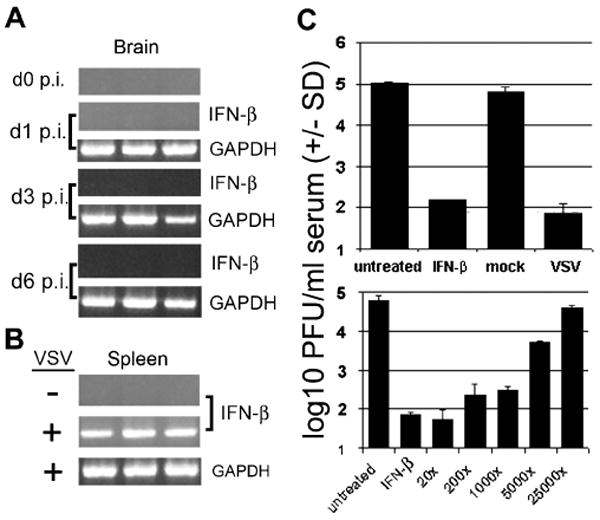Figure 3.

Intranasal infection of mice with VSV induces no detectable IFN mRNA expression in the brain but high levels of type I IFN mRNA in the spleen and IFN bioactivity in serum. Mice were mock-infected (receiving PBS) or infected with 1 × 104 PFU VSV i.n. and sacrificed at various times p.i. Total RNA was isolated from brains and subjected to RT-PCR to detect IFN-β mRNA at days 1, 3, or 6 p.i. (A). RT-PCR to detect IFN-β mRNA was also performed on total RNA from mock- or VSV-infected mouse spleens taken at 24 h p.i. (B). Mouse sera collected from mock- and VSV-infected mice was subjected to IFN bioassay to detect the presence of type I IFN (C, top panel). Serial dilutions of serum were analyzed to semiquantify IFN levels in VSV-infected mouse sera (C, bottom panel). IFN controls in bioassays were used at a concentration of 100 units/ml. GAPDH served as housekeeping gene control for RT-PCR reactions.
